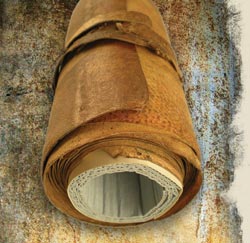The Senior Conservator for Special Collections plans and executes individual intermediate and advanced treatment of special collections material from the Rare Book, Manuscript, and Special Collections Library, University Archives, branch libraries, and University cultural heritage curatorial organizations. This position reports to the Head, Conservation Services Department. A full job description and application instructions can be found at http://library.duke.edu/jobs/srconservator.html.
Education:
Required: ALA-accredited MLS or Master’s degree in conservation of library and archival materials, or demonstration of a similar level of education and training required for the conservation of rare materials.
Preferred: Demonstrated record of continued education in areas relevant to this position.
Experience:
Required: Five years conservation-related experience with substantial demonstrated experience and participation in the field, leading to exceptional manual skills and a full understanding of conservation theory and practice; extensive knowledge of materials science and chemistry of the materials used to create library materials; demonstrated knowledge of current conservation theory and practice; commitment to AIC standards of practice; knowledge of conservation ethics and practices relevant to research library materials; knowledge of physical and chemical mechanisms of deterioration of library materials; ability to communicate effectively orally and in writing as well as possess strong interpersonal skills; ability to work independently and as part of a team in a changing environment; ability to instruct and demonstrate technique.
Preferred: Seven to 10 years conservation experience; experience working in a research library; additional expertise in the treatment of photographic materials, works on art on paper, vellum and parchment, or similar cultural heritage materials; teaching experience; supervisory experience; experience evaluating and treating materials selected for digital imaging projects; experience with exhibit preparation.
 Continue reading the article at Duke Magazine.
Continue reading the article at Duke Magazine.

 Hello readers. We are in the process of moving information from our website to our blog. In order to do so I created posts for each entry and will be publishing them en masse. This means a lot of new (old) things in your RSS reader and they will also show up here. I apologize in advance, but after they are up we will be able to better organize and keep track of our news items. And that is what we are all about as librarians, yes? the better organization and dissemination of information?
Hello readers. We are in the process of moving information from our website to our blog. In order to do so I created posts for each entry and will be publishing them en masse. This means a lot of new (old) things in your RSS reader and they will also show up here. I apologize in advance, but after they are up we will be able to better organize and keep track of our news items. And that is what we are all about as librarians, yes? the better organization and dissemination of information?




 The latest issue of
The latest issue of 